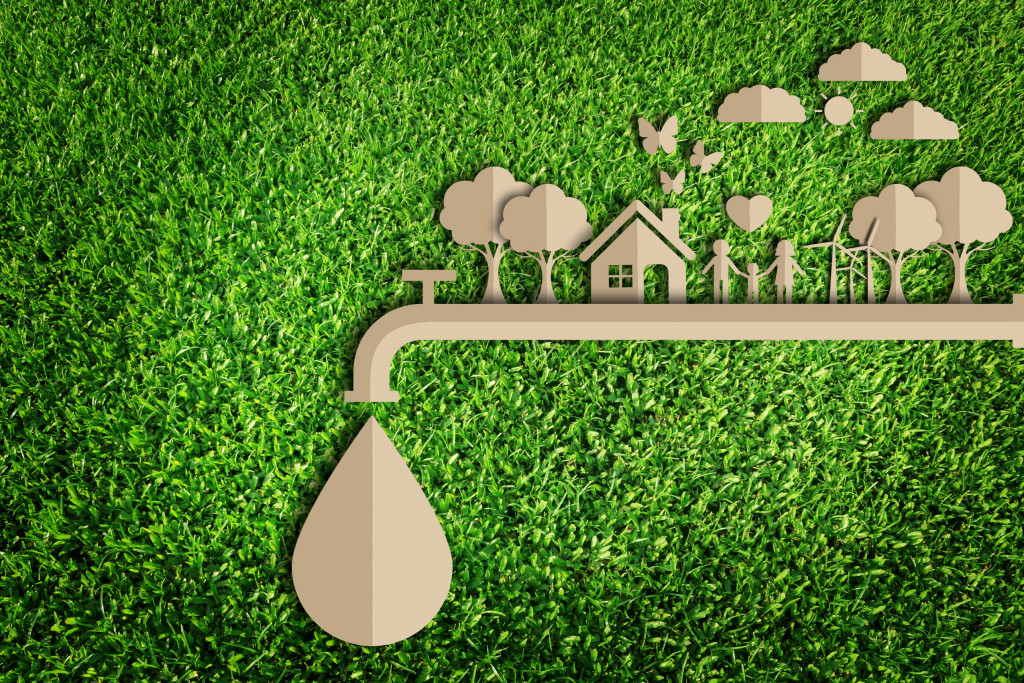The world is suffering due to carbon emissions. It’s estimated that the United States is responsible for six billion metric tons of carbon emissions annually. These emissions are the leading cause of climate change. The cost of climate change is estimated to be between $150 billion and $320 billion annually, which includes the damage from rising sea levels, more intense storms, hotter temperatures, and precipitation changes.
Americans need to stop this global phenomenon by helping the environment. You can help the environment in many ways; recycling, driving less, and eating organic foods are just a few. Another way you can help is by building an eco-friendly home. This doesn’t mean that you have to live in a treehouse (although that would be pretty cool), but there are some things you can do to make your home more environmentally friendly. Here are a few tips:
Insulate Your Home
This will keep the heat in during winter and the cool air in summer, so you won’t have to use your heating and cooling systems as much. There are many different types of insulation, but here are four of the best insulation materials for your home.
Fiberglass
This is one of the most affordable insulation options. It’s made from recycled glass and is designed to trap air in small spaces. Fiberglass also doesn’t contain harmful chemicals and can be installed by a professional or DIYer.
Cellulose
This insulation is made from recycled paper mixed with fire retardants and borate, a natural wood preservative. It offers excellent soundproofing, but it may not work as well in humid climates.
Spray Foam
If you want high-quality insulation for your home, spray foam is the way to go. This type of insulation fills every nook and cranny of your home, so there are no gaps or crevices for outside air to enter. The downside is that it can be expensive, so do research before choosing this option.
Rockwool
This insulation is made from basalt rock, which is melted and spun into wool-like fibers. It offers high R-value ratings and can stand up to fire, water, and pests.
There are many different ways you can help the environment at home. Insulating your home with one of these materials will positively impact climate change while keeping your house energy efficient. You should also consider protecting various parts of your home, mainly your basement.
Your basement releases a lot of heat during the summer and cold air in the winter, so insulating it can help decrease your energy costs. Thankfully, an experienced basement finishing contractor can deal with that. They can protect your basement walls, floors, and ceilings to help keep the heat in during winter and the cold during the summer. This can help reduce costs and make your home more sustainable.

Use Energy-Efficient Appliances
Appliances such as refrigerators, washing machines, and dishwashers use a lot of energy, so it’s essential to choose energy-efficient ones. These appliances will still work just as well as their non-energy-efficient counterparts, but they won’t use as much electricity, which is good for your wallet and the environment.
Let the Natural Light In
During the daytime, open your curtains and let the sunshine in; it’s a free source of light and heat! Not only does this reduce your electric bill, but it also feels great to sit in a sunbeam on a cold day. Here are two other ways to let more natural light in your home:
Install a Skylight
One of the best ways to let more natural light into your home is by installing a skylight. They’re inexpensive, energy-efficient, and add charm to any room.
Replace Your Windows
If you have old windows letting the heat out (or the cold in), it’s time to replace them with newer, more efficient ones.
Solar Panels
Solar panels are becoming increasingly popular, and for a good reason; they save a lot of money on electric bills, and they’re environmentally friendly. So if you’re thinking about solar panels, doing some research is a good idea to determine if they’re right for you.
Plant Trees
Trees provide shade in the summertime and can help keep your home cooler; plus, they’re aesthetically pleasing (and who doesn’t love looking at trees?). So this is a great way to reduce your carbon footprint while making your yard look nice!
You don’t have to make significant changes to build an eco-friendly home; even small changes can make a big difference. By following the tips above, you can help the environment while saving money on your utility bills. So what are you waiting for? Start building that eco-friendly home today!






